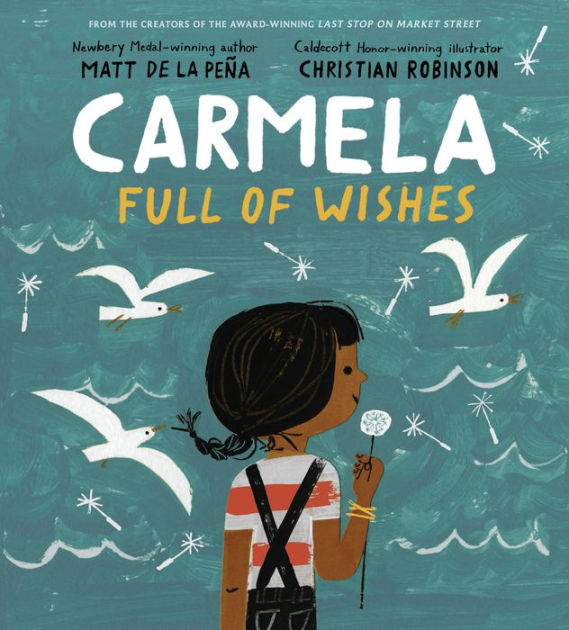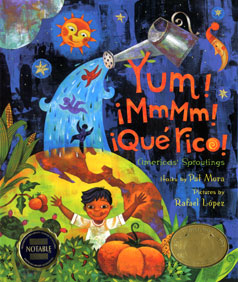Birdsong
A Review by Amanda Kendall

Bibliography:
Flett, Julie. 2019. Birdsong. Vancouver: Greystone Books. ISBN 1771644737
Plot Summary:
In the span of a year, Katherena's life changes dramatically. In the spring, she moves with her mother from a house by the sea to a new home in the country. In the summer, her mother encourages her to go visit their older neighbor, Agnes whom Katherena instantly bonds with over a love of art and creating. In the fall, Katherena visits Agnes again and again, each visit bringing the two friends closer. In winter, Agnes gets sick and Katherena brings her salmon soup. When spring rolls around again, Katharena visits her friend to bring the beauty of nature to Agnes's bedroom.The two talk about art and enjoy the silence of each other's company. When Katherena leaves she reflects on how privileged she is to have Agnes as a friend.
Critical Analysis:
Julie Flett's talent for storytelling and creating are exquisitely showcased in Birdsong. A Cree-Metis author and illustrator, Flett shares her cultural background throughout the picture book. The thoughtful text sets a slower pace for this read and creates a reflective mood throughout the story. Simple sentences are expertly crafted to paint images in the readers mind and evoke emotion. For example in the line "It's a murky spring morning as we pack up the last of our belongings and leave our little home in the city by the sea" (Flett 2019) the words are simple enough, but the imagery is strong and the sadness of the character palatable. Strong descriptive words and meaningful dialogue move the story along at just the right pace showing the passing of time in both the everyday and the friendships developed over time.
Flett's pastel and pencil illustrations are soft and emotional. The natural colors and textures compliment the mood of the text. The earthy tones match the story's seasonal structure and bring a sense of calm and order to the story. In addition to the use of natural tones, Flett includes other authentic cultural markers throughout the text. Her characters are authentically represented in skin tone and show the everyday life of someone sharing her culture. The illustrations have a strong focus on nature and the natural order that nature brings to the world. The color tones, textures, and soft sometimes blurry lines, create soothing images. Flett focuses on birds throughout the illustrations, including a different species on almost every page. At times, the birds are the focus of the illustration as when the geese fly south for winter and other times they are subtly included sitting in a tree outside a window. The story and birds come full circle in the end when Katherena's drawings of each bird are put up around Agnes's room. Beautifully crafted, each illustration enhances the story and impresses the importance of connection to nature and creativity.
Cultural markers of the Cree-Metis people can be found flawlessly woven into the text. Authentic names are used for characters like Katharena and her dog, Ôhô which means owl in Cree. Katharena also tells Agnes about the Cree seasons, explaining that the current month "is called pimihâwîpisim - the migrating moon" (Flett, 2019). Katharena sleds on a toboggan and makes salmon soup to take to her friend. These small details help paint a beautiful authentic picture of a young Cree girl who has found a true friend in her neighbor.
Ultimately, Birdsong is a celebration of friendship. The friendship that develops between Katharena and Agnes shows how friendships can develop through shared interests regardless of age. It is the art and act of creating things that brings them together. Strong themes of nature, friendship, the passage of time, and finding beauty in the small moments all make this book a charming book about life.
Review Excerpts & Awards:
PUBLISHER'S WEEKLY (September 30, 2019) "Cycling from spring to spring, Flett's subtle, sensitive story delicately traces filaments of growth and loss through intergenerational friendship, art making, and changing moons and seasons. Cree-Métis words (defined in a small glossary) add an intimate layer of identity to the child’s lustrous narration, which shines against the spare beauty of rich illustrations by Flett (who is Cree-Métis)"
PUBLISHER'S WEEKLY (September 30, 2019) "Cycling from spring to spring, Flett's subtle, sensitive story delicately traces filaments of growth and loss through intergenerational friendship, art making, and changing moons and seasons. Cree-Métis words (defined in a small glossary) add an intimate layer of identity to the child’s lustrous narration, which shines against the spare beauty of rich illustrations by Flett (who is Cree-Métis)"
KIRKUS REVIEWS (July 1, 2019) "Flett’s simple story explores the difficulties of moving but also shows
young readers how new friends can sometimes ease them; that this
friendship is an intergenerational one between fellow artists is an
especially sweet touch. Flett (Cree/Métis) employs her
characteristically minimalist style, placing Katherena against flat
expanses of greensward that changes with the seasons, birds wheeling
above in silhouette. Katherena and her mom both have brown skin and
straight, black hair; Agnes has brown skin as well, but she does not
speak Cree. Emotionally stunning.
- Winner of the TD Canadian Children's Literature Award, 2020
- American Indian Youth Literature Honor Title, 2020
- A Boston Globe - Horn Book Honor Book
- Best Book of the Year: Publisher's Weekly, School Library Journal, Kirkus, Horn Book, Quill & Quire, Globe and Mail
Curricular Connections:
- Seasons are an important element of the book. Have students create a collage of their favorite season using a variety of materials and textures.
- Friendship is an important theme in Birdsong. Discuss what makes a good friend using examples from the book and create an anchor chart for reference.
- Moving to a new place is difficult. Pair this text with Evelyn Del Rey is Moving Away by Meg Medina to explore how friendships may change and develop during this transitional time.
- Create a character change visual using a circle divided into 4 equal parts to show how Katherena changes throughout the year, season by season.



